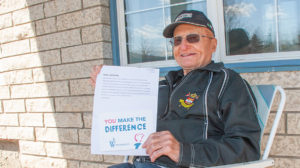
WWII vet Laverne Tufts, 99, receives a precious letter – and flower seeds – from Holland
BY KIM LANGEN
A retired mechanic and WWII veteran recently received a flowery surprise, along with a message from Holland, which just happened to coincide with a special birthday.
Laverne Tufts, who turned 99 on April 14, said it was wonderful to open an envelope sent to him from the Netherlands, to find both a letter, and flower seeds.
“It’s a letter, from a school girl in Holland, Floor, thanking us for helping to liberate the Netherlands,” said Tufts. “And there is a card, with flower seeds pressed into it. I am going to plant the card in a flowerpot on my balcony. I don’t know what the flowers are yet.”
Tufts was born in 1922, and his mother wrote on his birth certificate that ‘it was Good Friday,’ he said. He grew up on a farm in the Fairfax District, and in 1942 he signed up to serve.
“I was a trooper, in the armoured corps,” said Tufts. “I was 20 years old when I joined, and I trained as a tank gunner. I was with the Lord Strathcona Horse Armoured Regiment, and my division was mostly prairie people. After basic training in Canada I went to England in 1943, for more training, including map reading in Brighton. And then to Africa, to the port of Algiers, and then across the Mediterranean to Naples, in Italy, and to the Adriatic coast. But I didn’t fight: I became a scout car driver.”
Normally a two-man team, of driver and radio operator, Tufts soon found himself alone at the wheel.
“We were so short of men they took the radio operators out, and we worked alone, driving and operating the radio,” he said. “Our job was to check for broken bridges – that was the main one. We would accompany tanks in a squadron, that’s 20 tanks, and sometimes escort prisoners of war. They had to walk ahead of us; sometimes the young ones were pretty difficult, and pretty mad.”
Tufts drove a British-made Daimler, he said, a specially armoured car that could withstand any rifle shells.
“You got in through a hatch on the top. We had to climb up over the hood to the top to get in,” he said. “During moonlight nights we could check on things like bridges, sometimes with an officer in the scout car.”
Then the call came in for support in Holland, which was occupied by Nazi forces.
“After Italy we took all our equipment, from Pisa, onto barges,” said Tufts. “We went to Marseilles, France. There were two divisions, and it was marvellous how they organized that. Jeeps, tanks, everything, all over one night. We drove to France, then to part of Belgium, and we were there for two weeks, while we waited for everyone to catch up. Then we went to Holland, near Amsterdam, and then to Arnhem. That’s when we started to fight.”
Tufts said they assembled at Zuiderzee, a big port on the west of Holland.
“They wanted a big push to separate the Germans from the north and the south,” said Tufts. “They wanted it done in five days, but it took six. And we did it. People mobbed us in the towns. They were so glad to see us, the Canadians. They had flowers, and they blocked the roads. The Dutch resistance people knew why we were going ahead, and they helped speed up the trip, by letting the Dutch people know that we needed to move quickly. They were wonderful people.”
During the move, locals often aided the scout car drivers with integral information.
“I would be going back and forth with the scout car, and sometimes a town official would ride up on the hood of the car, and point out where the Germans were, over here, or over there,” said Tufts.
Along with his letter from 15-year-old Floor, Tufts also received correspondence from Wageningen 45, The National Committee Commemoration Capitulations 1945, which seeks to draw attention to worldwide issues of peace, freedom, and security.
Wageningen was the first Dutch city to be liberated, and the capitulation was signed in a hotel there on May 5, 1945.
“The Netherlands has lived in peace and freedom for 76 years, and we practically take it for granted,” said the letter. “And that is thanks to you. We would like to honour and thank you in a different way, and have enlisted the help of the young people of Wageningen for this. We asked the students between the ages of 11 and 16 to make a contribution by means of a thank you letter. We aim to show our appreciation to those who fought within our land during the period of 1940 to 1945.”
A letter of thanks was sent not only to Tufts, but also around 680 veterans worldwide, they said.
“We would like to turn this into a yearly tradition, until the last veteran passes away,” they said.
Tufts, who worked as shop foreman for John Deere in Boissevain for eight years, and farmed for 29 years, now resides in the Legion Plaza in Killarney. And he’s still driving.
“I’m doing good,” he said. “I can’t complain about my health. Life is good. I still drive, a small truck, a grey Chevy Colorado. I still go to Keith’s (Keith Kemp, his son-in-law) every day, to work on cars or whatever he’s got going in the shop. And I help Joan (his daughter) in the garden if I can. He just got another car yesterday. It’s just something to do.”
And how did the birthday go? Pretty sweet it turns out.
“I had a lot of calls, eight to 10 calls,” he said. “My neighbour, Pat Gibson, brought me an Angel Food cake. And my granddaughter brought me another Angel Food cake too. Which one was the best? It’s in the freezer.”
Laverne Tufts also enjoyed a dinner at Joan’s the following Saturday, he added. And for him, turning the great age of 99 was no big deal.
“It was just an ordinary day,” he said.
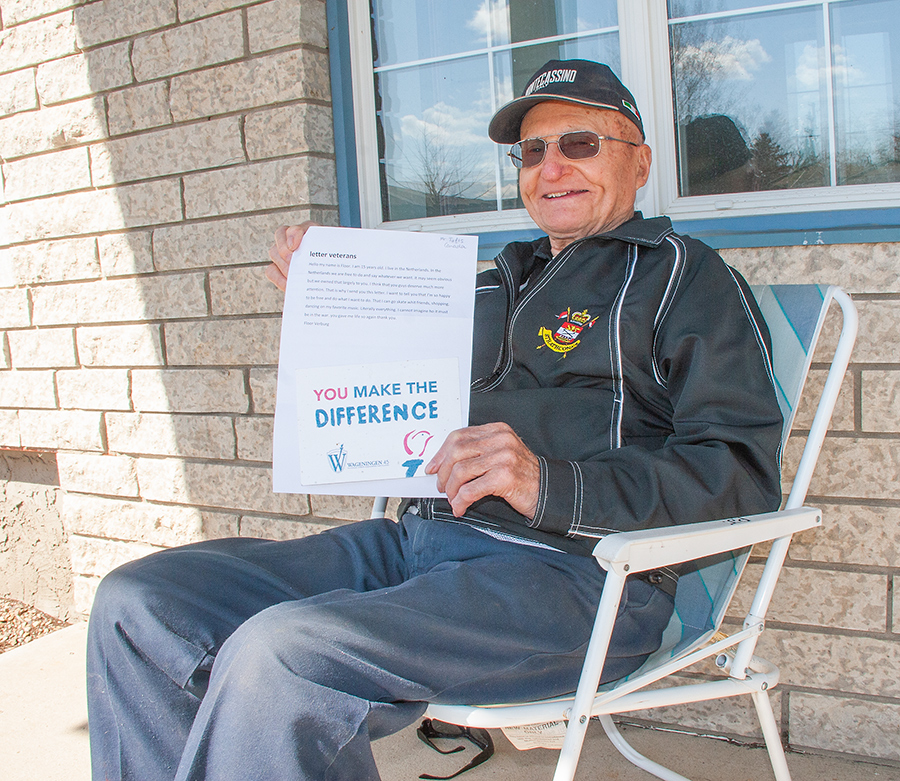
A LOVELY LETTER FROM FLOOR – Laverne Tufts, 99, holds up a personal letter of gratitude sent from high school student ‘Floor’ – Dutch for ‘flower’ – in the Netherlands. Tufts was one of hundreds of WWII vets worldwide who received a letter like this, in recognition of their role in liberating Holland from Nazi occupation. The enclosed card is embedded with flower seeds, and Laverne will be growing them on his balcony.
KIM LANGEN/KILLARNEY GUIDE
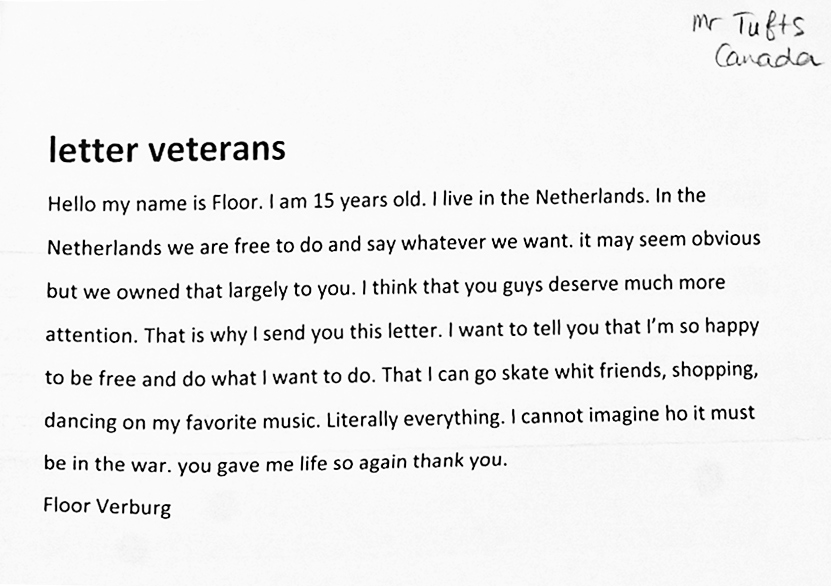
Floor’s letter to Laverne.

WWII photo of Tufts in his early twenties.
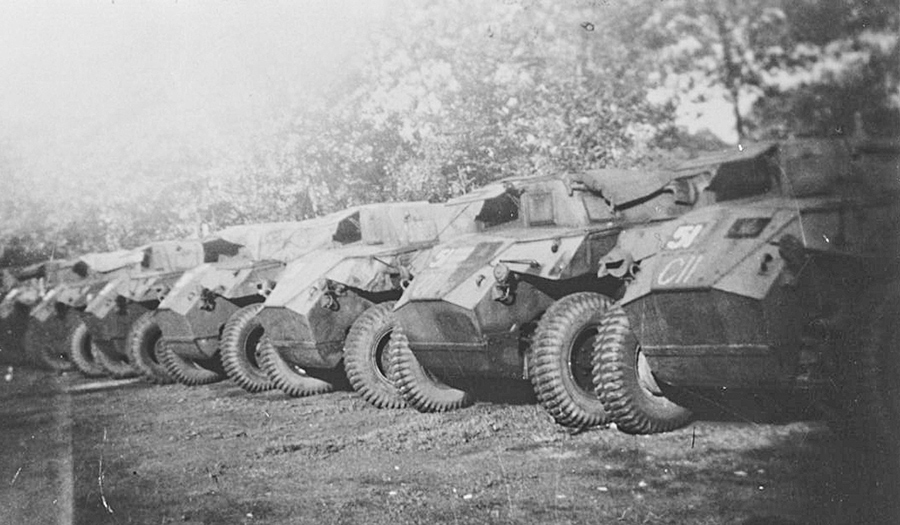
SCOUT CARS – A photo of the amoured Daimler scout cars used by Tufts and his troop during WWII. Tufts had the same scout car for the entire war.
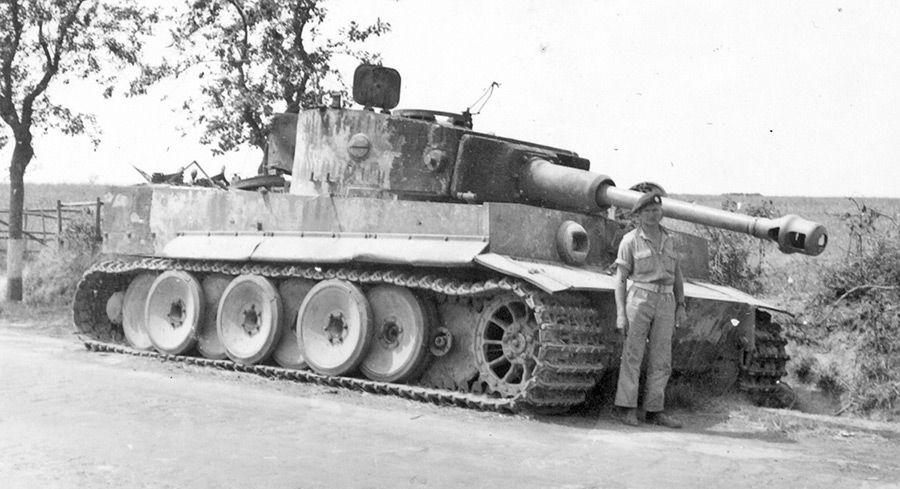
DEAD TIGER ON THE HIGHWAY TO ROME – Scout car driver Lavern Tufts of Killarney is pictured here during World War II on the side of a highway north of Rome – with a dead Tiger. The enormous Tiger Tank belonged to Schwere Panzer Abteilung 508, and was likely blown up by its crew for lack of fuel.

